BIOL 251 Exam 3 Adaptive Immunity
1/55
There's no tags or description
Looks like no tags are added yet.
Name | Mastery | Learn | Test | Matching | Spaced |
|---|
No study sessions yet.
56 Terms
Identify each trait as a characteristic of innate immunity or adaptive immunity.
Innate immunity
Present at birth
Always available
Early-warning system
Not organisms-specific
No memory response
Adaptive immunity
Specific response to a particular microbe
Response to a microbe that has breached the innate defenses
Organism-specific
Slower to respond
Memory response
Involves lymphocytes
Answer
Present at birth - Innate immunity
Slower response - Adaptive immunity
Lacks memory response - Innate immunity
Specific response to a particular microbe - Adaptive immunity
Memory response - Adaptive immunity
Always available - Innate immunity

What is the difference between humoral and cellular adaptive immunity?
Humoral
Immunity due to antibodies
B lymphocytes
Cellular
Recognition of antigenic peptides after they have been processed
T lymphocytes
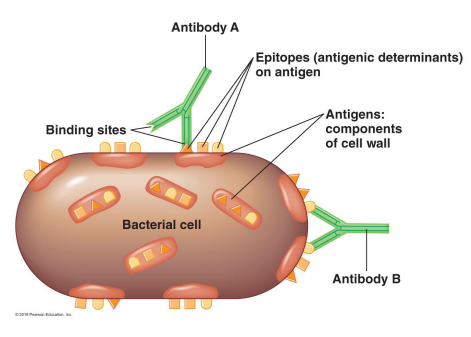
What is an antibody?
Protein produced by the host to recognize and interact with specific antigens
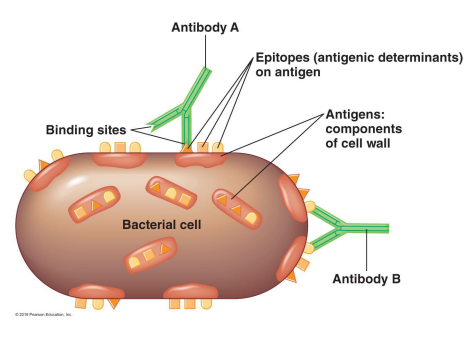
What is an antigen?
Substance that causes the production of antibodies
Components of invading microbes

What is an epitope?
Specific region of an antigen that an antibody interacts with
Antigens are also called
immunoglobulins (Ig)
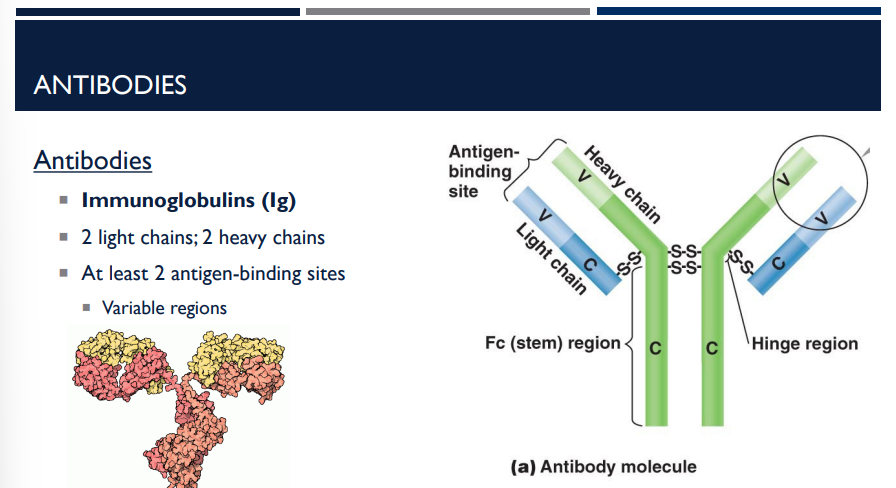
Describe the structure of Immunoglobulins (Ig), also known as antibodies.
2 light chains; 2 heavy chains
At least 2 antigen-binding sites
Variable regions
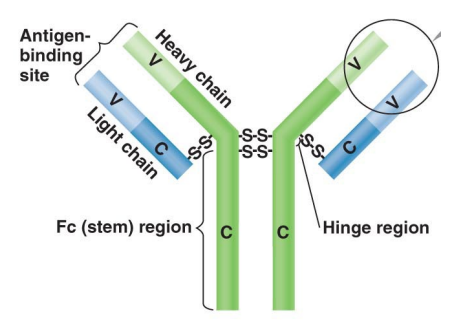
What is this
antibody molecule

The specificity of an antibody is due to
the L chains.
the H chains.
the variable region of the L and H chains.
the constant region of the L and H chains.
C
The variable region of the antibody specifically binds and recognizes an antigen based on its shape. The antigen fits into the binding site in the variable region like a lock in a key.
Describe IgG, a type of antibody.
~80% of all serum antibodies
Longer lasting (half life of 23 days)
Enhance phagocytosis
Neutralizes toxins and viruses
Protects fetus and newborn
Triggers complement system
What antibody Enhance phagocytosis?
IgG
What antibody is ~80% of all serum antibodies?
IgG
What antibody is Longer lasting (half life of 23 days)?
IgG
What antibody Neutralizes toxins and viruses?
IgG
What antibody Protects the fetus and newborn?
IgG
What antibody triggers the complement system?
IgG

What type of antibody is this
IgG
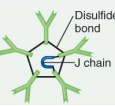
What type of antibody is this
IgM

What type of antibody is this
IgA
Describe IgM, a type of antibody.
First antibodies produced
Pentamer structure
Half life = 5 days
Effective agglutination
Triggers complement system
Which antibody were the First antibodies produced?
IgM
Which antibody has a Pentamer structure?
IgM
Which antibody has a half-life of 5 days?
IgM
Which antibody has effective agglutination?
IgM
Which antibody triggers the complement system?
IgM
Describe IgA, a type of antibody.
Found in mucous membranes and body secretions
Dimer
Half life = 6 days
Prevents pathogens from binding to mucus membranes
Which antibody is Found in mucous membranes and body secretions?
IgA
Which antibody has a Dimer structure?
IgA
Which antibody has a half-life of 6 days?
IgA
Which antibody Prevents pathogens from binding to mucus membranes?
IgA
The presence of which type of antibody would suggest that a patient was previously vaccinated for an illness and does not have a current infection?
IgA
IgG
IgM
Answer
B
IgG antibodies are relatively long-lived. Their presence may indicate that immunity to an infection was acquired in the past.
IgM antibodies are the first antibodies present, but they do not last long in the body. The presence of IgM in a patient sample would indicate a current infection.
IgA antibodies are also produced earlier in an infection and do not persist in the body for extended periods.
The humoral response of the adaptive immune system activates what type of cells?
Activation of B cells (T-dependent antigen)
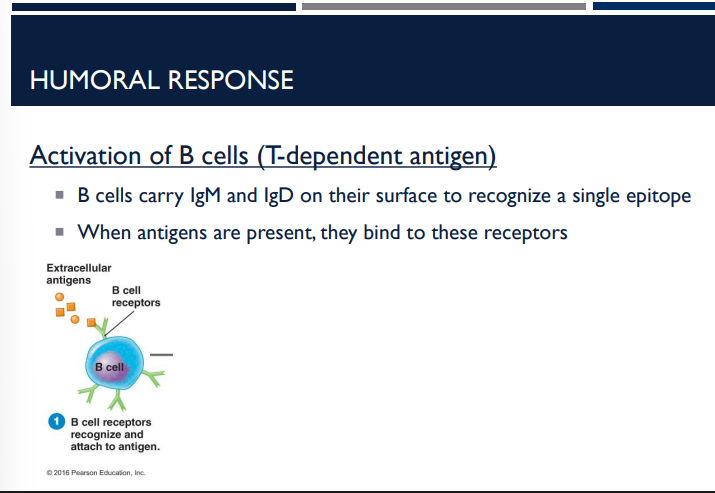
The humoral response of the adaptive immune system activates B cells (T-dependent antigen). What do B cells do?
B cells carry IgM and IgD on their surface to recognize a single epitope.
When antigens are present, they bind to these receptors.
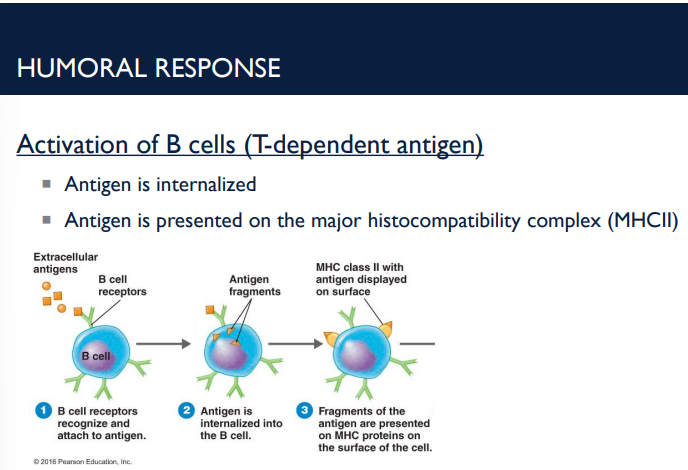
After these steps of the humoral response, what happens?
B cells carry IgM and IgD on their surface to recognize a single epitope.
When antigens are present, they bind to these receptors.
Antigen is internalized
Antigen is presented on the major histocompatibility complex (MHCII)
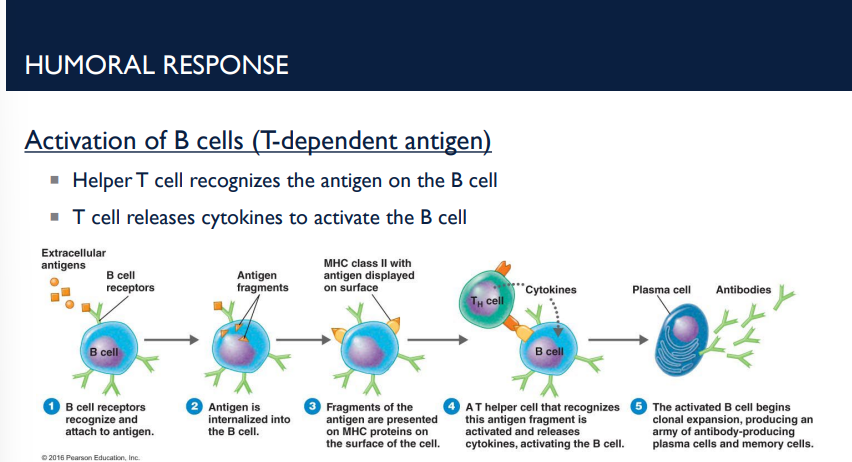
After these steps of the humoral response, what happens?
B cells carry IgM and IgD on their surface to recognize a single epitope.
When antigens are present, they bind to these receptors.
Antigen is internalized
Antigen is presented on the major histocompatibility complex (MHCII)
Helper T cell recognizes the antigen on the B cell
T cell releases cytokines to activate the B cell
An activated B cell proliferates through?

CCCCLONALLLLL EXPANNSSSIONNNNN
Some cells become plasma cells to produce antibodies
Some cells become memory cells
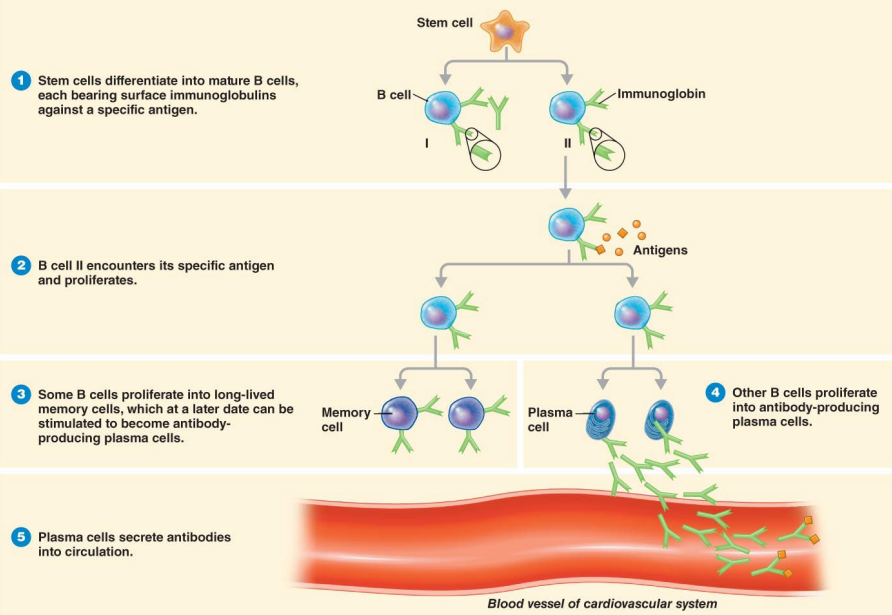
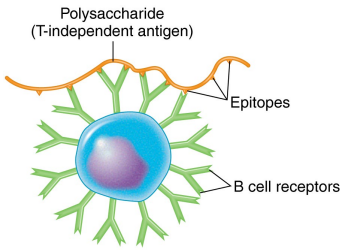
what is the activation of B cells like for a T-INdependent antigen?
Some antigens can activate B cells directly, without help from T helper cells. These are called T-independent antigens, and they usually have multiple repeats of the same epitope, such as polysaccharides or lipopolysaccharides.
Antigen has multiple repeats of the same epitope (polysaccharides, lipopolysaccharides)
Antigen can bind to multiple receptors on a single B cell
B cells are activated directly by the antigen
Weaker response
Primarily IgM
No memory cells
In short:
T-independent antigens directly activate B cells, produce mostly IgM, and do not create long-term immunity.
T/F: T-independent antigens directly activate B cells, produce mostly IgM, and do create long term immunity.
F. They do not create long-term immunity.
T/F: T-independent antigens directly activate B cells, produce mostly IgM, and do not create long term immunity.
T
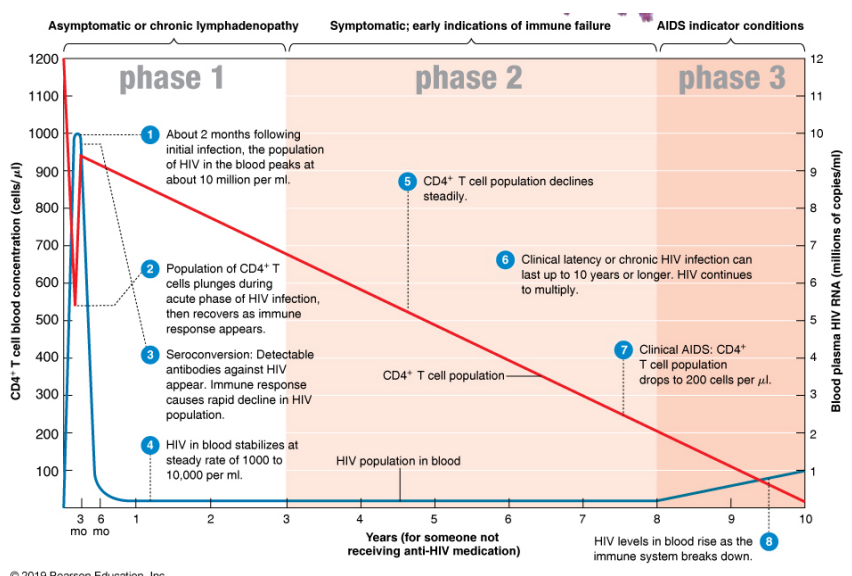
A patient with AIDS (phase 3) has a low TH count. Why does this patient have trouble making antibodies?
TH cells produce antibodies directly.
TH cells are required to activate B cells to produce antibodies.
TH cells kill invading pathogens.
TH cells become cytotoxic T lymphocytes that kill infected body cells.
Answer
B
The CD4+ helper T cells are required to activate B cells. When a B cell recognizes an antigen, it displays that antigen on its surface. The antigen is then recognized by the helper T cell and releases cytokines. The cytokines activate the B cell, resulting in clonal expansion. The B cells can differentiate into plasma cells or memory cells. It is the plasma cells that produce antibodies.
In a patient with AIDS, there are not many helper T cells in the body. Thus, even when a B cell recognizes and displays an antigen, it will not become a plasma cell without activation from the T cell.

Antibodies tag foreign cells and molecules for
destruction.
Antibodies tag foreign cells and molecules for destruction. What are the ways in which it does this?
Agglutination
Opsonization
Antibody-dependent cell-mediated cytotoxicity
Neutralization
Activation of complement
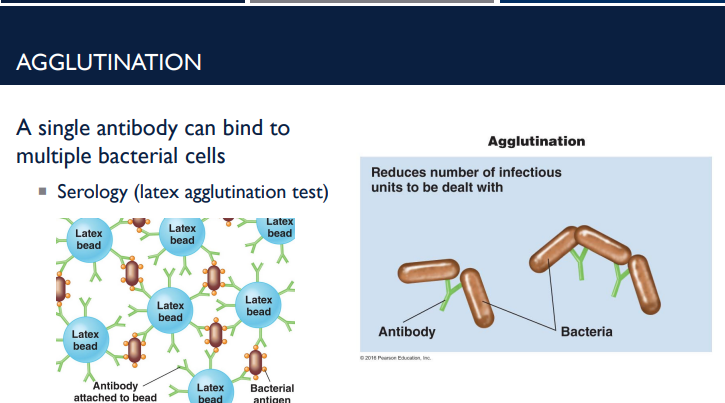
Antibodies tag foreign cells and molecules for destruction. One of the way it does it is through agglutination. Describe this process.
A single antibody can bind to multiple bacterial cells
Serology (latex agglutination test)
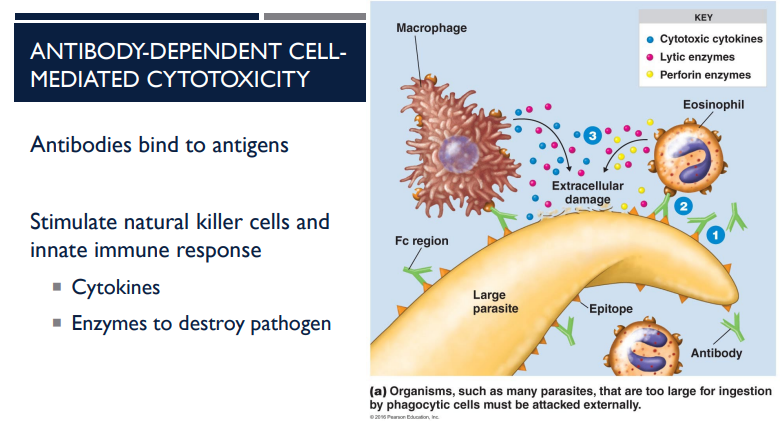
Antibodies tag foreign cells and molecules for destruction. One of the way it does it is through Antibody-dependent cell-mediated cytotoxicity. Describe this process.
Antibodies bind to antigens
Stimulate natural killer cells and innate immune response
Cytokines
Enzymes to destroy pathogen

Antibodies tag foreign cells and molecules for destruction. One of the way it does it is through opsonization. Describe this process.
Antigen is coated with antibodies.
Antibodies enhance ingestion and lysis by phagocytic cells
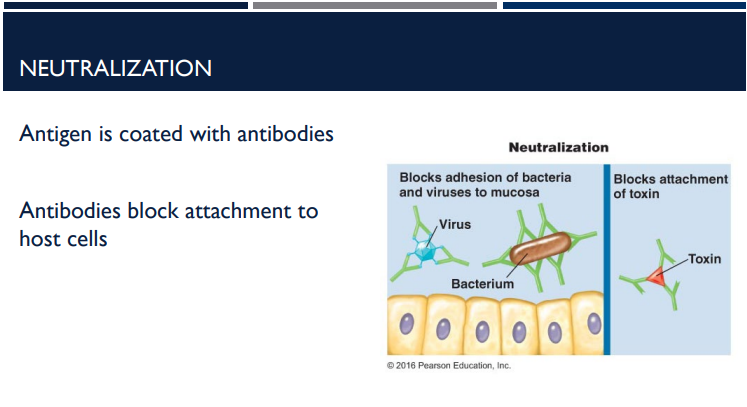
Antibodies tag foreign cells and molecules for destruction. One of the way it does it is through neutralization. Describe this process.
Antigen is coated with antibodies
Antibodies block attachment to host cells
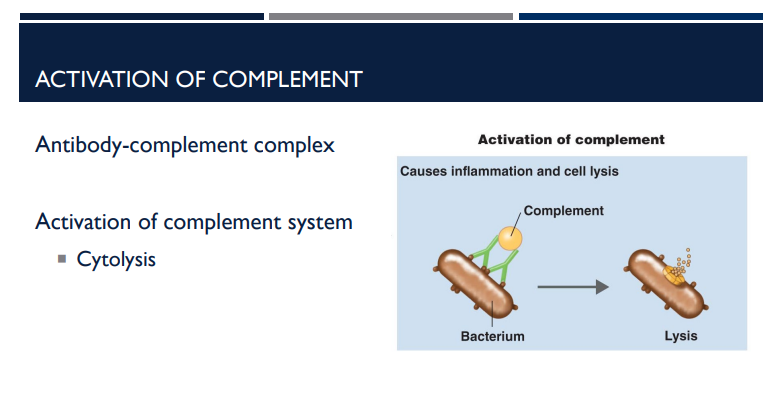
Antibodies tag foreign cells and molecules for destruction. One of the way it does it is through activation of the complement. Describe this process.
Antibody-complement complex
Activation of complement system
Cytolysis
Tricohomonas spiralis is a roundworm that can cause gastrointestinal illness in humans. Antibody binding to T. spiralis will cause worm death by which method?
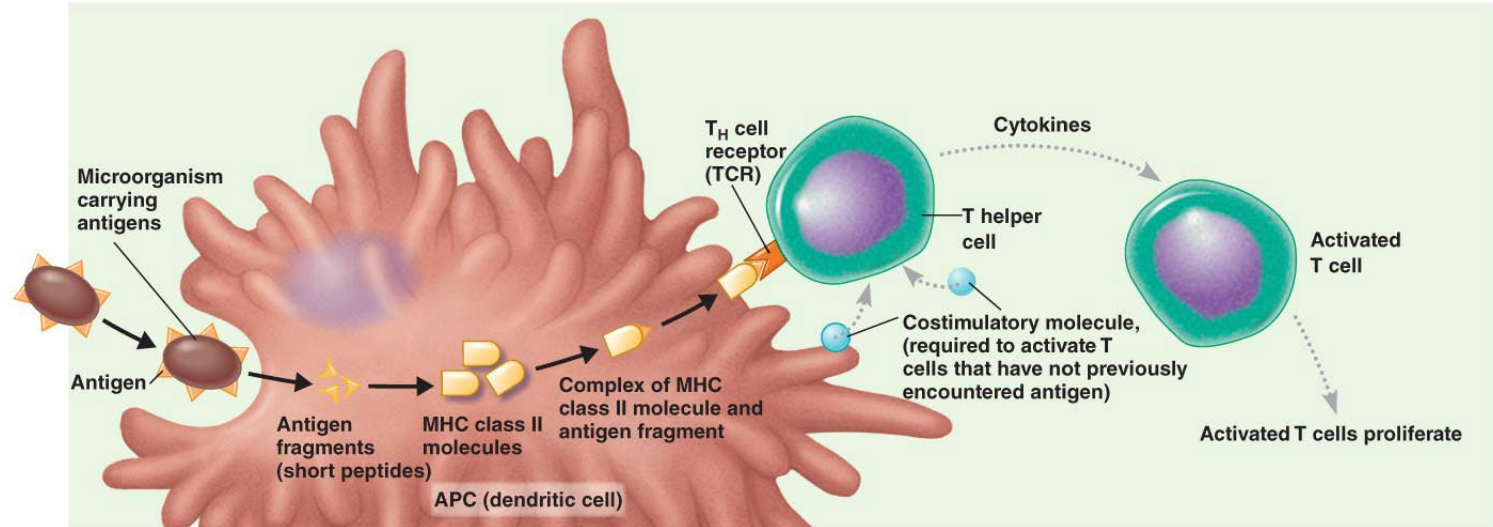
Cellular (Cell-Mediated) Immunity (adaptive immunity) is Mediated by T lymphocytes (T cells). T cells recognize antigenic peptides that are processed and presented on the surface of infected or antigen-presenting cells. This branch is essential for destroying infected cells, activating other immune cells, and coordinating the overall immune response.
Describe the steps of activation of CD4+ helper T cells.
Dendritic cell ingests a microbe
Antigens are presented on the surface of the dendritic cell on MHCII
TH cell recognizes antigen
Dendritic cell releases costimulatory molecule
T cell is activated
T cell proliferates
Activate B cells
Activate CTL
Activate macrophages
T cells may differentiate into memory cells

Cellular (Cell-Mediated) Immunity (adaptive immunity) is Mediated by T lymphocytes (T cells). T cells recognize antigenic peptides that are processed and presented on the surface of infected or antigen-presenting cells. This branch is essential for destroying infected cells, activating other immune cells, and coordinating the overall immune response.
Describe the steps of activation of cytotoxic T lymphocytes.
Infected cell displays antigen on MHCI
T cell recognizes antigen
T cell releases cytokines
Cytokines activate CTLp (precursor to CTL)
CTLp becomes a CTL (cytotoxic T lymphocyte)
CTL lyses infected body cells
A patient has a genetic disorder in which he does not synthesize class I major histocompatibility complex proteins (MCH1). Which of the following statements would be true for this patient?
The patient would not be able to produce antibodies.
The patient would be more susceptible to bacterial infections.
The patient would be less susceptible to protozoan infections.
The patient would not be able to destroy virally infected cells.
Answer
D
When a cell is infected by a virus, it displays viral antigens on the MCH1. If a patient can not make MHCI, the infected cells would not be able to display the viral antigen. Without this complex, the infected cells could not be recognized by cytotoxic T lymphocytes or TH1 cells.
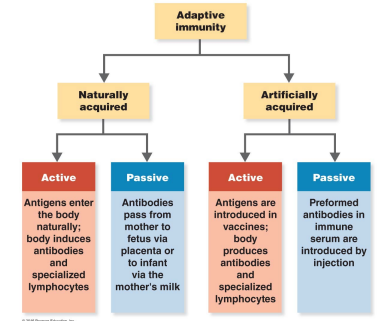
What are the types of adaptive immunity? (hint: 4)
see chart
After a possible exposure to rabies, patients may be given an injection of antibodies against the rabies virus. What type of immunity is this?
Naturally acquired active immunity
Artificially acquired active immunity
Naturally acquired passive immunity
Artificially acquired passive immunity
Answer
D
Because this is a treatment given by injection, it is artificially acquired.
Because this treatment contains antibodies from another organism, it is passive. The patient receiving the treatment does not make the antibodies themselves.
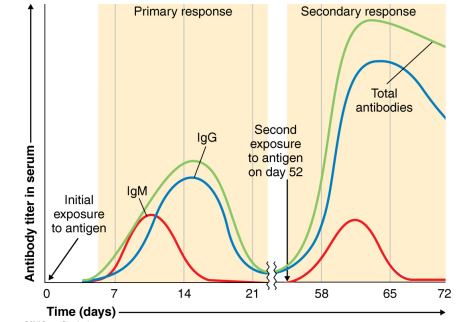
What is immunological memory?
Immune responses intensify after a second exposure to an antigen
More rapid
Greater magnitude
Body can eliminate pathogen more easily on second exposure
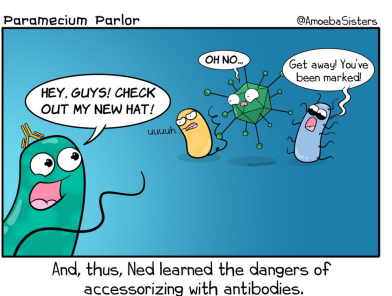
laugh.
hahahahahdahadhahsfsdfsakjlldJASDJAHAHAHAHHA
Tricohomonas spiralis is a roundworm that can cause gastrointestinal illness in humans. Antibody binding to T. spiralis will cause worm death by which method?
Neutralization
Agglutination
Antibody-dependent cell-mediated cytotoxicity
Opsonization
Answer
C
Antibody-dependent cell-mediated cytotoxicity is used against larger pathogens, including parasitic worms. Due to their size, these organisms are not affected by other defense mechanisms of the immune system.